“Command the hail to strike from all sides”
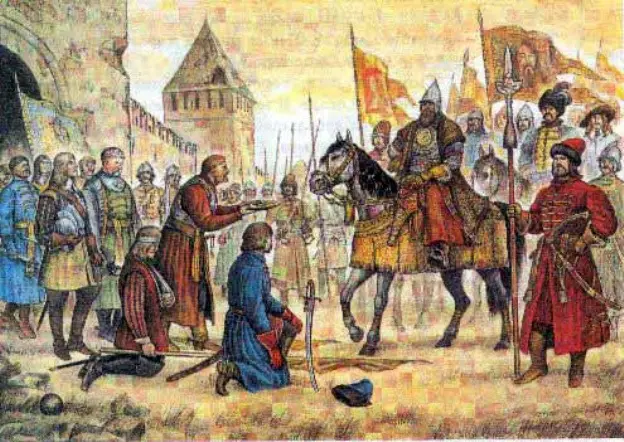
Moscow vs Lithuania
"Eternal Peace", signed on October 8, 1508 between the Grand Duchy of Lithuania and the Russian State (Lithuania is trying to take revenge), became just another temporary respite and lasted only two years. The contradictions between the two Russian powers were fundamental, and they could only be resolved by a decisive victory of one of the centers of power. Lithuanian Rus', which became a powerful power at the expense of Western Russian lands and the Russian population, was under the rule of the Polish kings, and it was gradually Polished, Catholicized and Westernized.
In order for Moscow to become the main center of Russian civilization, it was necessary to unite around itself the main centers of the Russian land and most of the superethnos of the Rus-Russians. Therefore, the growing Moscow is waging a stubborn and brutal struggle to be the center of “all Rus'”, and is also beginning to gradually crush the legacy of the Horde Empire, which collapsed into several uluses (Crimea, Kazan, Astrakhan, Nogai Horde and others).
In the western strategic direction, the main opponent of Muscovite Rus' was the Grand Duchy of Lithuania and Russia. It was a great Russian power with a predominantly Russian population and Russian lands. The Lithuanians themselves, until quite recently (according to historical Merkam) were pagans, and part of the Balto-Slavic linguistic and cultural community. In particular, they worshiped Perun (Perkunas) and Veles, common gods with the Rus. But the Lithuanian elite gradually drifted towards the Western, Catholic world. In the future, Russians were threatened with the fate of the Slavic-Russian tribes of Central Europe - extermination and assimilation (Germanization).
Therefore, the struggle between Moscow and Lithuania was principled and extremely fierce. The Rus fought with the Rus for the future of Russian civilization. Either Rus' is a periphery and part of Europe, or a separate civilization-world.
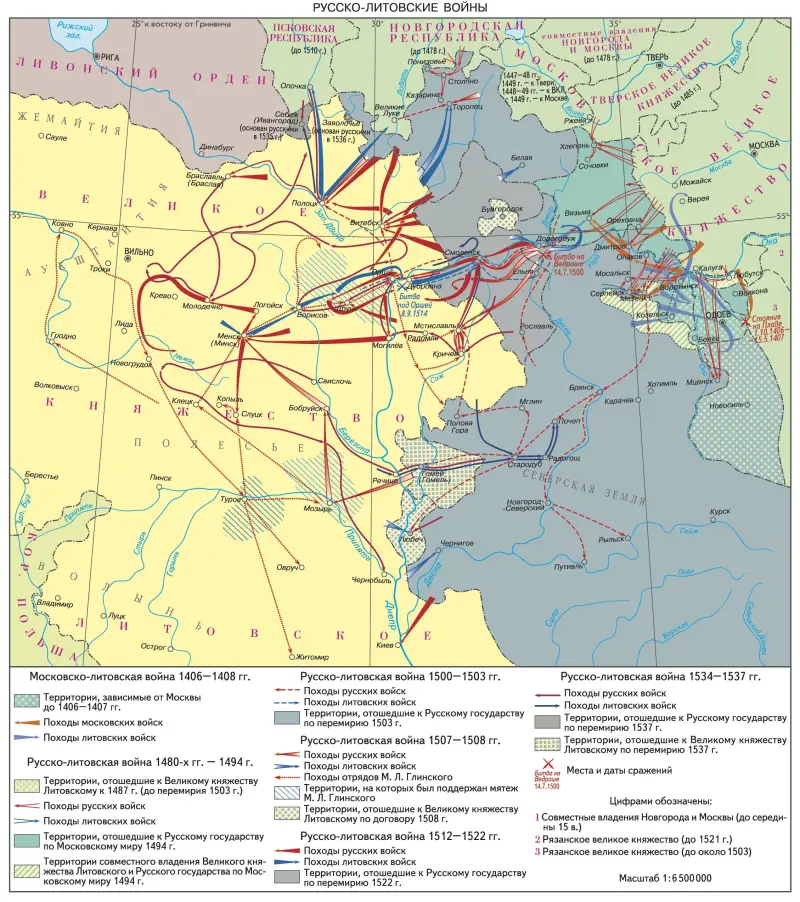
Casus belli
The reason for the new war was received by Emperor Vasily III Ivanovich (Sovereign Vasily III. "Collector of Russian lands") information about the arrest of his sister Alena (Elena) Ivanovna, the widow of the Grand Duke of Lithuania Alexander Kazimirovich. The princess wanted to return to her relatives. In addition, the Lithuanian lords ruined and took away her possessions. Deciding to leave without the permission of the monarch Sigismund, the dowager queen made an agreement with Moscow.
However, some traitor learned about Elena’s plans, and she was arrested. At the same time, the arrest was demonstratively insulting: the governors Radziwill and Ostikov “took Elena by the sleeves and forcibly took her out of the church, in violation of the ancient law on inviolability in the temple. They took the treasury and dispersed all the servants.
Soon after this, in January 1513, Helen died suddenly. The Lithuanians wrote that “out of grief.” Russian sources claim that the daughter of the Grand Duke of Moscow Ivan III Vasilyevich and the Byzantine princess Sophia Paleologue was poisoned.
Perhaps this action was organized by the war party in Lithuanian Rus' to provoke Moscow. Helena's wealth went to the Polish queen Barbara Zapolya.
This incident greatly angered Tsar Vasily Ivanovich.
In addition, relations between the two Russian powers were strained to the limit by the conclusion of an agreement between the Grand Duchy of Lithuania and the Crimean Khanate. Sigismund I the Old incited the Crimean Tatars to attack the southern Russian lands. At the request of the Polish king, in May 1512, detachments of Crimean Tatars under the command of the sons of Khan Mengli-Girey, “princes” Akhmet-Girey and Burnash-Girey, came to the cities of Belev, Odoev, Aleksin and Kolomna. The Tatars ravaged the Russian lands beyond the Oka River and left safely, taking a huge captivity.
Russian regiments led by the sovereign's brothers Andrei and Yuri Ivanovich, governor Daniil Shchenya, Alexander Rostovsky and others could not interfere with the Crimean Horde. They had strict orders from Vasily III to limit themselves to the defense of the line along the Oka River.
Three more times in 1512, the Crimeans invaded Russian lands: in June, July and October. In June they attacked the Seversk land, but were defeated. In July, on the borders of the Ryazan principality, the “prince” Muhammad-Girey was put to flight. However, the autumn invasion of the Crimean Horde was successful. Tatar troops even besieged the capital of the Ryazan principality - Pereyaslavl-Ryazan. They could not take the city, but they destroyed all the surrounding areas and took many people into slavery.
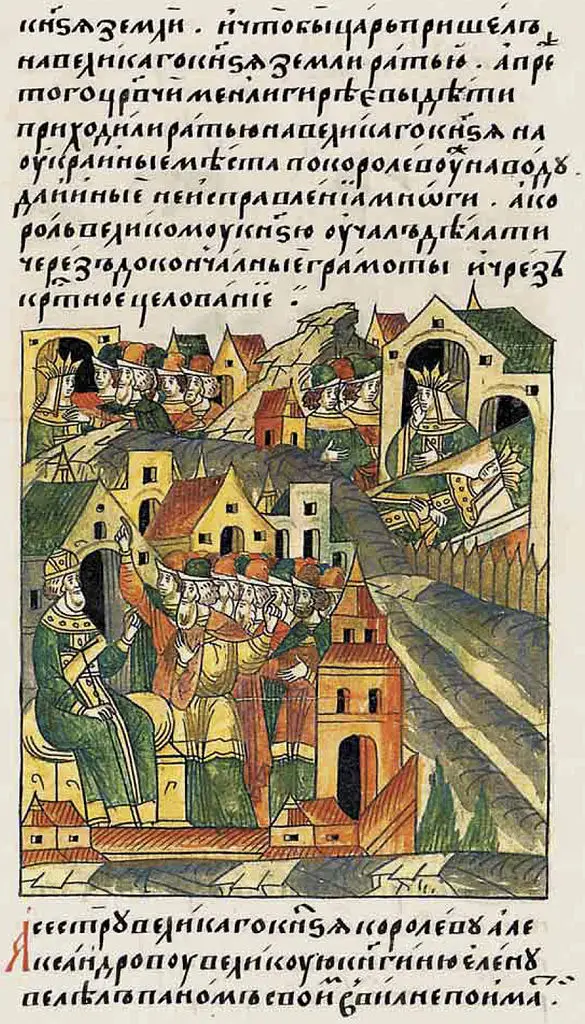
Arrest and death of Elena. Miniature from the Facial Chronicle vault
The beginning of the war. First siege of Smolensk
In the fall of 1512, news arrived in Moscow that the Crimean invasions of that year were the consequences of the Crimean-Lithuanian treaty directed against the Russian kingdom.
Moscow declares war on the Grand Duchy of Lithuania in November. In mid-November 1512, the advanced army of the Vyazma governor, Prince Ivan Mikhailovich Repni Obolensky and Ivan Chelyadnin, went on a campaign. The army received the task, without stopping at Smolensk, to go further to Orsha and Drutsk. There the advanced army was supposed to unite with the detachments of princes Vasily Shvikh Odoevsky and Semyon Kurbsky, who set out from Velikie Luki to Bryaslavl (Braslavl).
On December 19, 1512, the main forces of the Russian army set out on a campaign under the command of Tsar Vasily Ivanovich himself. In January 1513, the Russian army, numbering up to 60 thousand soldiers with 140 guns, approached Smolensk and began a siege of the fortress.
At the same time, strikes were carried out in other directions. The Novgorod army under the command of princes Vasily Vasilyevich Shuisky and Boris Ulanov advanced in the direction of Kholm. From the Seversk land, the army of Vasily Ivanovich Shemyachich set out on a campaign against Kyiv. He was able to burn down the Kyiv suburbs with a surprise attack. The regiments of Repni Obolensky, Chelyadnin, Odoevsky and Kurbsky, following the order of the Grand Duke, marched across a vast territory with fire and sword, ravaging the outskirts of Orsha, Drutsk, Borisov, Bryaslavl, Vitebsk and Minsk.
The first siege of Smolensk did not produce positive results. The garrison stubbornly defended itself (3 thousand soldiers and townspeople). At the very beginning of the siege, in January 1513, the Moscow army tried to take the fortress virtually on the move. The attack involved foot city militias, including Pskov pishchalniki. However, the garrison repelled the assault, with heavy losses for the army of the Grand Duke - up to 2 thousand people died. The artillery shelling of the Smolensk fortress did not help either. The situation was complicated by the winter conditions of the siege and the difficulties associated with supplying the army with food and fodder.
As a result, the command decided to retreat after 6 weeks of siege. At the beginning of March, the army was already in the Moscow area. On March 17, a decision was made to prepare a new campaign against Smolensk; it was scheduled for the summer of the same year.
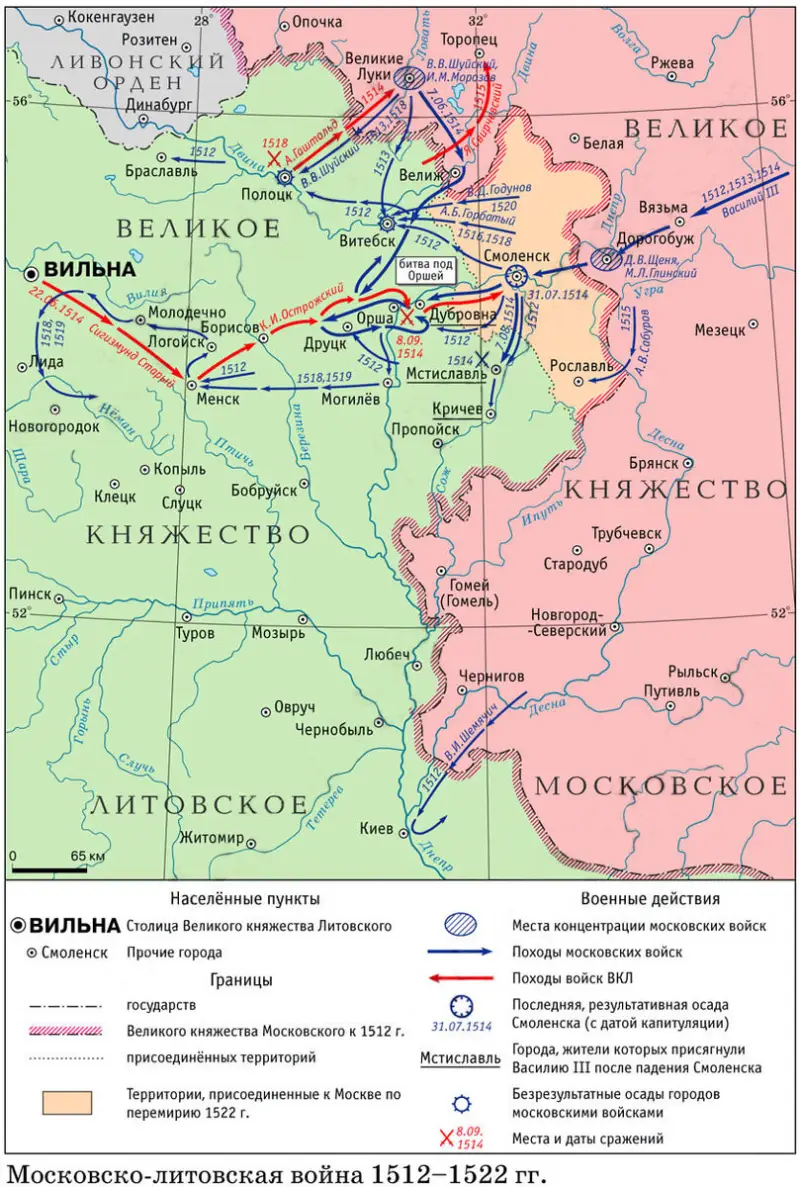
Second siege of Smolensk
Very significant forces took part in the new offensive against the Grand Duchy of Lithuania. Grand Duke Vasily himself stopped in Borovsk, sending his governors to the Lithuanian cities. An 80-strong army under the command of Ivan Repni Obolensky and Andrei Saburov again besieged Smolensk. An army of 24 thousand under the command of Prince Mikhail Glinsky besieged Polotsk. An 8-strong detachment from Glinsky’s forces blocked Vitebsk. A 14-strong detachment was sent to Orsha. Also, part of the Moscow troops under the command of Prince Alexander of Rostov and Mikhail Bulgakov-Golitsa, together with detachments of the Verkhovsky princes, were deployed on the southern borders for defense against the Crimean Tatars.
The main events took place near Smolensk. The capture of Smolensk was the main objective of this campaign. This time they were better prepared for the siege. The army had military engineers (“rozmysly”) hired in Western Europe thanks to the connections of Mikhail Glinsky. They prepared the siege engines.
The siege of the city began in August 1513. At the very beginning, Lithuanian troops under the command of Governor Yuri Glebovich (shortly before the start of the second siege, the garrison was replenished with mercenary infantry and became bolder) fought outside the city walls. The Lithuanians were able to push back Repni Obolensky's Advanced Regiment, but were soon put to flight by arriving reinforcements. The Lithuanians suffered significant losses and retreated beyond the city walls.
The Moscow army began a siege, bombarding the fortress. The artillerymen tried to make a hole in the walls so that they could launch an assault. The garrison covered the wooden walls with earth and stones; they withstood artillery fire. Only the advanced fortifications and towers were able to be destroyed. Russian troops went on the attack several times, but the garrison was able to repel all attacks. Still, it was clear that without outside help the garrison of Smolensk would not hold out for long. The city was starving.
At this time, Sigismund I gathered an army of 40 thousand and moved troops to the rescue of besieged Vitebsk, Polotsk and Smolensk. The Lithuanian army, led by Prince Konstantin Ostrozhsky, managed to unblock Polotsk and Vitebsk, surrounded by Russians. Advanced Lithuanian detachments appeared in the combat area in October.
Grand Duke Vasily, who was with the army, decided not to accept the battle and retreat. Following the main forces, the remaining detachments pulled back to their territory. However, this retreat did not violate the plans of the Moscow sovereign, and the war continued. Lithuanian Rus' suffered heavy losses as the war took place on its territory. Moscow regiments ravaged the outskirts of Polotsk, Vitebsk, Mstislavl and a number of other cities.
The defense of Smolensk was undermined. The city fortifications suffered serious damage (in particular, the Kryloshevskaya Tower was destroyed). The devastation of the surrounding area deprived Smolensk of its food supply.
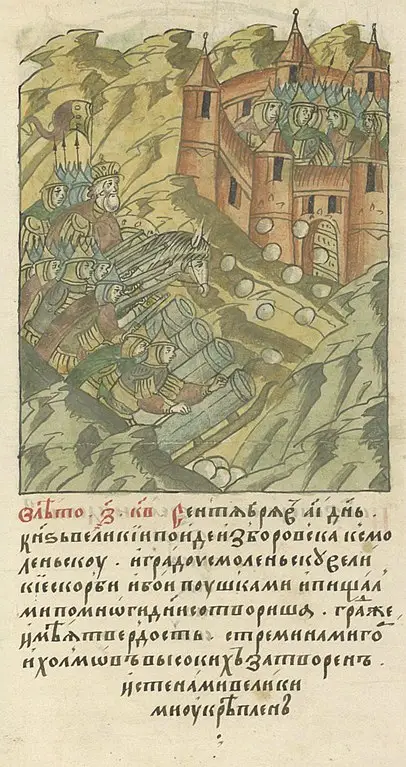
Facial chronicle vault. September 11, 1513, Smolensk. In the summer of September 7022, 11, on the XNUMXth day, the Grand Duke left Borovsk for Smolensk, and caused great sorrows and battles with cannons and arquebuses for many days in the city of Smolensk; The city, having firmness, was closed with rapids of mountains and high hills and fortified with great walls, and the great prince, having captured the whole earth, returned to Moscow.
Capture of Smolensk
At the end of May 1514, Vasily III for the third time moved his regiments, first to Dorogobuzh, and then to Smolensk. The army was commanded by Daniil Shchenya, Ivan Chelyadnin (voivode of the Great Regiment), Mikhail Glinsky and Mikhail Gorbaty (Advanced Regiment). On June 8, 1514, the great sovereign himself set out on a campaign, and his younger brothers, Yuri Dmitrovsky and Semyon Kaluga, also went with him. Another brother, Dmitry Ivanovich Zhilka, stood in Serpukhov, guarding the flank from a possible attack by the Crimean Horde.
The Polish king and Grand Duke of Lithuania Sigismund I the Old, guessing that a new attack on Smolensk was inevitable, placed the experienced governor Yuri Sologub at the head of the garrison. On May 16, 1514, an 80-strong Russian army with 140 guns besieged Smolensk for the third time. As before, separate detachments were sent to Orsha, Mstislavl, Krichev and Polotsk, ravaging the area and distracting the enemy.
The siege of Smolensk lasted three months. Engineering preparations took two weeks: a palisade was built around the Smolensk fortress, slingshots were built opposite the gate to prevent attacks by the garrison, and positions for guns were arranged. Sources report a powerful bombardment of the city and mention the name of the best Russian gunner, Stefan, who caused significant damage to the defense of Smolensk.
The Resurrection Chronicle says that the Russian warriors “installed large cannons and squeaks near the city,” and the Grand Duke “commanded to beat the city from all sides, and make great attacks without rest, and beat the city with fiery cannons.”
The active actions of the Russian artillery and the long absence of assistance ultimately broke the resolve of the garrison. Lithuanian commanders proposed starting negotiations on a truce. This request was rejected by Grand Duke Vasily III, who demanded immediate surrender. Under pressure from the townspeople, the Lithuanian garrison surrendered on July 31.
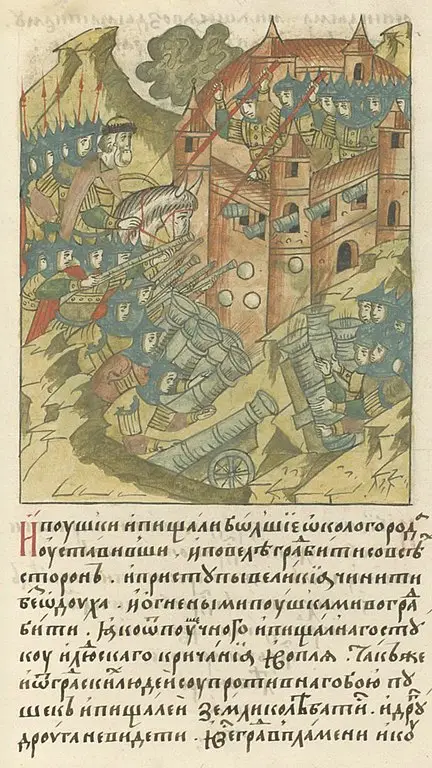
Facial chronicle vault. July 1514 (1513 according to Art.), “On the capture of Smolensk.” And he placed large cannons and squeaks near the city, and ordered the city to be beaten from all sides, and great attacks were carried out without rest, and with fiery cannons to beat the city. As if from the sound of cannons and squeaks and people's screams and screams, as well as from the city people opposing the battle of cannons and squeaks, the earth shook and did not see each other, and the whole city in flames and smoking smoke seemed to rise to it. And great fear fell upon the citizens.
On August 1, the Russian army solemnly entered the city. Smolensk Bishop Barsanuphius served a prayer service, during which the townspeople swore allegiance to the Moscow sovereign. Smolensk governor Yuri Sologub refused to take the oath and was released to Lithuania, where he was executed for surrendering the fortress.
The capture of Smolensk became the most important success of Vasily III in the western direction during all the years of his reign. The main goal of the war was achieved, although the war itself lasted another eight years with varying success.
The fall of Smolensk greatly strengthened the authority of the Moscow sovereign. Almost immediately, the nearest cities - Mstislavl, Krichev and Dubrovna - swore allegiance to Vasily Ivanovich. Vasily III, inspired by this victory, demanded that his commanders continue the offensive.
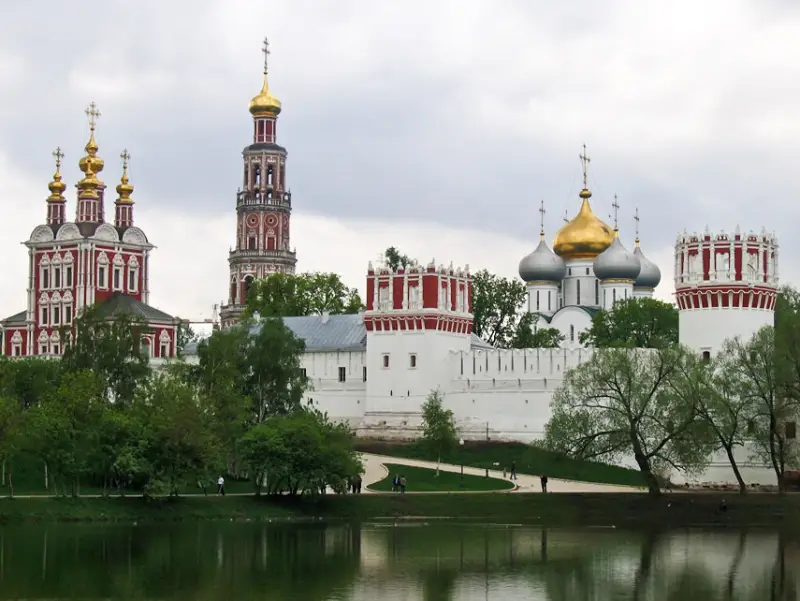
Novodevichy Convent in Moscow, founded in honor of the capture of Smolensk. In 1514, standing under the walls of Smolensk, Vasily III made a vow: “If by God’s will I get my fatherland, the city of Smolensk and the lands of Smolensk, then I will build a maiden monastery in Moscow on the outskirts, and in it a temple in the name of the Most Pure One...”. Ten years later - on May 13, 1524, in gratitude for the capture of Smolensk in 1514, he founded the Great Monastery of the Most Pure Mother of God Hodegetria, the New Maiden Monastery with a cathedral church in the name of the Smolensk Icon. The place for the monastery was chosen in a bend of the Moscow River, three miles from the Moscow Kremlin on the Devichye Pole. On July 28, 1525, the Smolensk Icon of the Most Holy Theotokos was transferred from the Kremlin to the “House of the Most Pure Hodegetria New Maiden Monastery” in a procession led by Vasily III himself and Metropolitan Daniel. Legend has it that the icon came to Rus' in the middle of the 1046th century (in XNUMX), when the Byzantine basileus Constantine IX Monomakh blessed his daughter, Princess Anna, who became the wife of Prince Vsevolod Yaroslavich, with it on her journey. The icon became the ancestral shrine of the Russian princes, a symbol of continuity and dynastic closeness of Constantinople and Rus'.
To be continued ...
Information